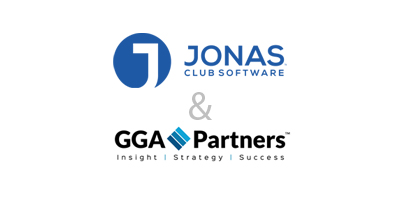In a market brimming with new technology solutions that could revolutionize the way you run a club, GGA Partner, Derek Johnston, reveals how your club can embrace these opportunities, while mitigating any business risks they could create.
Technology continues to change the world; new devices, platforms, and applications continue to enter the market at pace. Yet the criticism leveled at clubs remains the same. The industry is ‘slow to change’, ‘reluctant to adapt’, or can be ‘averse to new technology’.
Is this truly the case? And, if so, what are the reasons for the reluctance?
A technology dilemma
The promise of what enhanced technology can bring to a club is a compelling proposition: better information, increased productivity, improved accuracy, cost efficiencies, delivering an enhanced experience to members and guests. But it’s true that club leaders face a paradox, in that while new technology can often be the source of these tangible advantages, it can be the gateway to unforeseen issues and risks – ones which can easily go unnoticed if not supported appropriately or utilized correctly.
How have these risks come about? In part, through the existence of historical governing frameworks and adherence to traditional operating practices which have not kept pace with the digital transformation. Add in a human element, where individuals may not be properly equipped to implement or operate new technology with due skill and attention, and what were risks can easily become real-life business issues.
A common business issue clubs encounter is not just identifying a new technology solution, but adopting and integrating it effectively. Clubs can decide upon and acquire a technology and not use it – sometimes they don’t know how best to use it, other times their chosen technology is incongruent to their current business processes or improvement objectives, and, more often, folks simply don’t have the time.
Technology is a tool like any other, it fulfills its purpose when it’s being used. To embrace emerging technology, clubs must identify and select the right tool for the job, map out their implementation approach, restructure their existing processes, if necessary, and define targets against which progress will be measured.
Five Tips to Drive Technology Success:
What can clubs do to mitigate risk when assessing and implementing new technology?
1. Use evidence to inform your decisions
Based on business intelligence and current performance indicators, what are the areas of improvement you have identified? Technology solutions should address those areas directly to realize productivity, accuracy, cost efficiency, or other specifically identified improvement objectives.
2. Be selective
Scrutinize the technology proposition as it relates to its ability to address business needs and make significant improvements when compared to current processes. Then…
3. Take a phased approach
The majority of clubs are not blessed to employ extensive teams with broad and rich skillsets dedicated to technology implementation, training, and maintenance. This typically reduces your capability to take on multiple new forms of technology all at once and be effective in doing so. Prioritize and take a phased approach to how you introduce new technology.
4. Invest in staff training
While learning can and does take place ‘on the job’, ensure the relevant staff members are appropriately trained on an ongoing basis either by yourself or your technology partner. This will ensure you maximize the benefits of the new technology to your club, avoid improper use and protect against too few individuals owning the knowledge connected to the technology.
5. Set goals and targets
You may be investing on the promise of increased efficiencies, but unless you set targets and put in place the necessary measures to track performance, it’s impossible to assess the effectiveness of the new technology. Clear expectations and targets will help your staff buy in to its introduction and encourage your technology partners to best assist you in achieving them.
Although these steps may appear to be extensive, they should in no way be viewed as a deterrent to change. Why? Because there is also risk attached to inaction, standing still while the wider world continues to evolve.
Take one aspect of consumer behavior, for example. As the trend towards mobile and digital continues to grow and evolve, if your club becomes disconnected from this trend it could be seen as old-fashioned, traditional, or in ways simply incongruent with what your club really stands for. While clubs should never feel technology should be forced on them, they should at least consider what existing members and prospective members want; what the club needs to operate efficiently and effectively fulfill its mission; and what club leaders require to effectively develop, monitor, and maintain the club’s strategic direction. Most importantly, clubs should be prepared to act on their findings.
Embracing change
How then should a club approach technological change? In short, with an open-mind and a pragmatic, data-driven approach combined with the support and buy-in of staff, members and club stakeholders.
Whether the aim is to increase productivity, reduce costs or deliver a better experience to members and guests, those invested in the success and sustainability of the club will recognize the intention to improve. Not only will this protect against the market forces of standing still, it will take those invested in the club on a journey towards a better, brighter, more sustainable future.
For help on identifying and embracing emerging technology at your club, connect with Derek Johnston.





